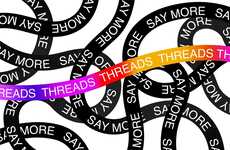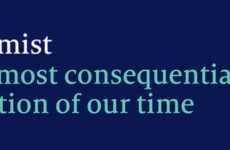
The Wall Street Journal Recently Released 'Blue Feed, Red Feed'
Joey Haar — January 3, 2017 — Pop Culture
References: graphics.wsj & boingboing.net
The Wall Street Journal's 'Blue Feed, Red Feed' is a stark visual representation of the incredibly different messages that Americans receive through their social media feeds based on their political leanings. The project, which was released in the wake of the US presidential election, places a conservative-leaning Facebook News feed side-by-side with a liberal-leaning Facebook News feed, encouraging viewers to understand the dramatically disparate information that people from each of those sides receive.
Though it might seem strange to admit it, Facebook is one of the most common realms in which people get their news. Since the social media site is not held to any sort of standard for displaying content, it relies on algorithms to give people the news that they most want to see. The result is tremendous bias in one's news feed depending on the articles they click most.
Though it might seem strange to admit it, Facebook is one of the most common realms in which people get their news. Since the social media site is not held to any sort of standard for displaying content, it relies on algorithms to give people the news that they most want to see. The result is tremendous bias in one's news feed depending on the articles they click most.
Trend Themes
1. Bias in Social Media Feeds - Opportunity to develop algorithms or tools that mitigate bias in social media feeds and provide users with a more balanced news consumption experience.
2. Political Information Echo Chambers - Chance to create platforms or apps that expose users to diverse political perspectives and break information echo chambers on social media.
3. Visualizing Partisan Messaging - Potential to develop visual tools or infographics that illustrate the differences in partisan messaging across social media platforms, promoting media literacy and critical thinking.
Industry Implications
1. Digital Media - Opportunity for digital media companies to develop news aggregation platforms that offer more diverse and balanced content to combat the issue of biased social media feeds.
2. Artificial Intelligence - Potential for AI companies to create advanced algorithms that can analyze and categorize news articles, providing users with a wider range of perspectives and reducing political biases in their feed.
3. Media Literacy Education - Opportunity for educational institutions and organizations to offer media literacy programs that teach individuals how to critically analyze and evaluate the information they consume on social media.
5.9
Score
Popularity
Activity
Freshness
























